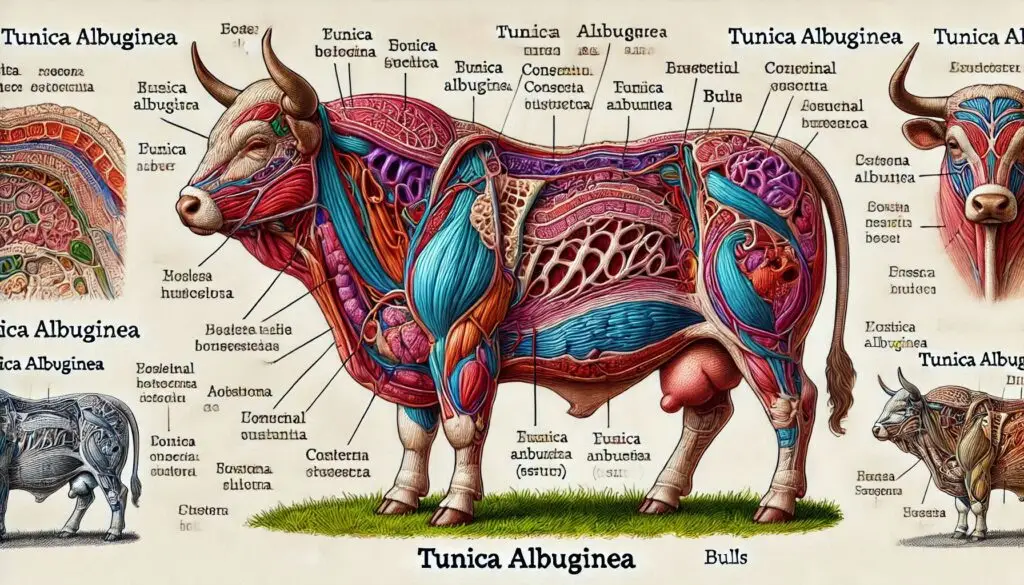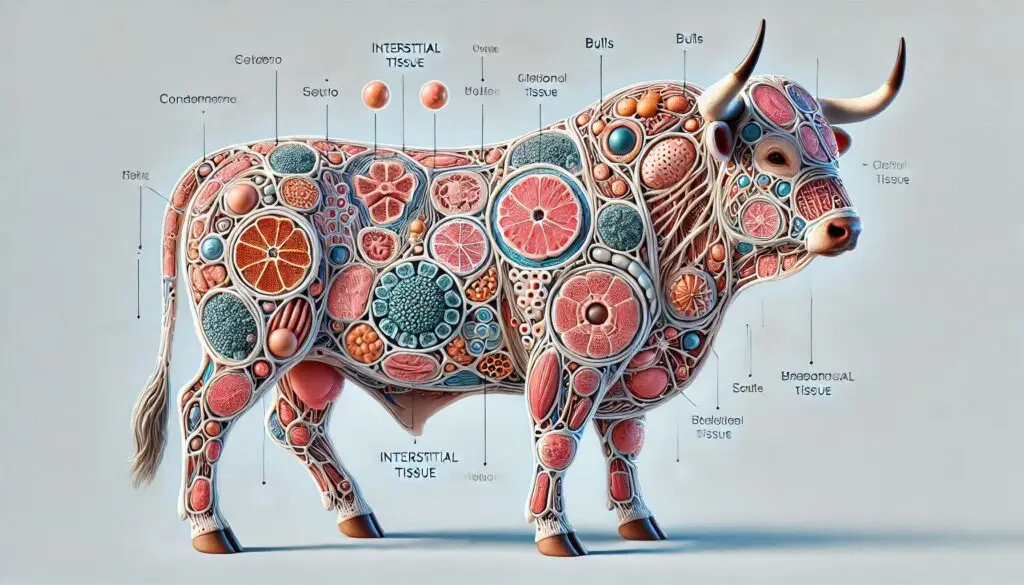Testicular Lobules in Bulls

Introduction
The male reproductive system of bulls is fascinating and complex. At the heart of this system are the testicular lobules. These structures play a crucial role in sperm production and hormone secretion. Understanding their anatomy and function provides insight into bull fertility and overall reproductive health.
What Are Testicular Lobules?
Testicular lobules are small, conical structures within the testes of bulls. Each testis contains many lobules, typically ranging from hundreds to thousands. These lobules are essential for spermatogenesis—the process of sperm cell development.
Anatomy of Testicular Lobules
Structure of Testes
The testes are oval-shaped organs located in the scrotum. They maintain a temperature lower than the body temperature, which is vital for sperm production. The outer layer is called the tunica albuginea, a tough fibrous capsule that protects the testes.
Composition of Lobules
Each testicular lobule consists of:
- Seminiferous Tubules: These are tightly coiled tubes where sperm production occurs. Each lobule contains one to four seminiferous tubules.
- Interstitial Cells (Leydig Cells): Located between the seminiferous tubules, these cells produce testosterone and other hormones.
- Sertoli Cells: These cells support and nourish developing sperm cells within the seminiferous tubules.
Seminiferous Tubules
The seminiferous tubules are where spermatogenesis takes place. They are lined with germinal epithelium, which contains various stages of sperm cells:
- Spermatogonia: The initial germ cells that undergo division.
- Primary and Secondary Spermatocytes: These cells undergo meiosis to reduce chromosome numbers.
- Spermatids: The final stage before maturation into spermatozoa.
For more detailed information on spermatogenesis, you can visit Spermatogenesis Explained.
Interstitial Cells (Leydig Cells)
Leydig cells are crucial for hormone production. They synthesize testosterone, which is essential for:
- Development of male secondary sexual characteristics.
- Regulation of libido.
- Maintenance of spermatogenesis.
For further reading on Leydig cells and their functions, check out Leydig Cell Function.
Function of Testicular Lobules
Spermatogenesis Process
Spermatogenesis is a multi-step process that occurs within the seminiferous tubules. It involves several stages:
- Mitosis: Spermatogonia divide to produce more germ cells.
- Meiosis: Primary spermatocytes undergo meiosis to form secondary spermatocytes.
- Spermiogenesis: Spermatids mature into spermatozoa.
This entire process takes about 60 to 70 days in bulls.
Hormonal Regulation
Hormones play a significant role in regulating spermatogenesis. The hypothalamus releases gonadotropin-releasing hormone (GnRH), stimulating the pituitary gland to produce:
- Luteinizing Hormone (LH): Stimulates Leydig cells to produce testosterone.
- Follicle-Stimulating Hormone (FSH): Promotes Sertoli cell function and supports sperm development.
For more on hormonal regulation in male reproduction, visit Hormonal Control of Male Reproductive Functions.
Importance of Testicular Lobules in Fertility
The health and functionality of testicular lobules directly impact bull fertility. Any disruption in spermatogenesis or hormone production can lead to reduced fertility rates. Factors affecting these processes include:
- Environmental Stressors: Heat stress can impair sperm production.
- Nutritional Deficiencies: A balanced diet is essential for optimal reproductive health.
- Genetic Factors: Genetic abnormalities can affect testicular development and function.
Common Disorders Affecting Testicular Lobules
Testicular Hypoplasia
This condition involves underdeveloped testicles, leading to reduced sperm production. It can be genetic or due to environmental factors during development.
Orchitis
Orchitis is inflammation of the testes, often caused by infections or trauma. This condition can severely impact fertility by disrupting normal function.
Varicocele
A varicocele is an enlargement of veins within the scrotum, which can lead to increased temperature around the testes. This condition may negatively affect sperm quality.
For more information on common testicular disorders, refer to Common Disorders of the Male Reproductive System.
Management and Care for Bull Reproductive Health
Nutrition
A balanced diet rich in vitamins and minerals supports overall reproductive health. Key nutrients include:
- Zinc: Important for testosterone production.
- Vitamin E: Acts as an antioxidant that protects sperm cells.
For guidance on bull nutrition, check out Nutrition for Beef Cattle.
Environmental Management
Maintaining optimal environmental conditions is crucial for bull fertility. This includes:
- Providing shade during hot weather.
- Ensuring proper ventilation in housing facilities.
Regular Health Checks
Regular veterinary check-ups help identify potential issues early on. Vaccinations against diseases that affect reproductive health are also essential.
For detailed guidelines on bull management practices, refer to Beef Cattle Management Practices.
Conclusion
In summary, testicular lobules play a vital role in bull reproduction by facilitating spermatogenesis and hormone production. Understanding their anatomy and functions helps improve breeding practices and overall herd health. By focusing on nutrition, environmental management, and regular health checks, farmers can enhance bull fertility and ensure successful breeding outcomes.
More from Veterinary Anatomy:
Cell Organelles




Responses